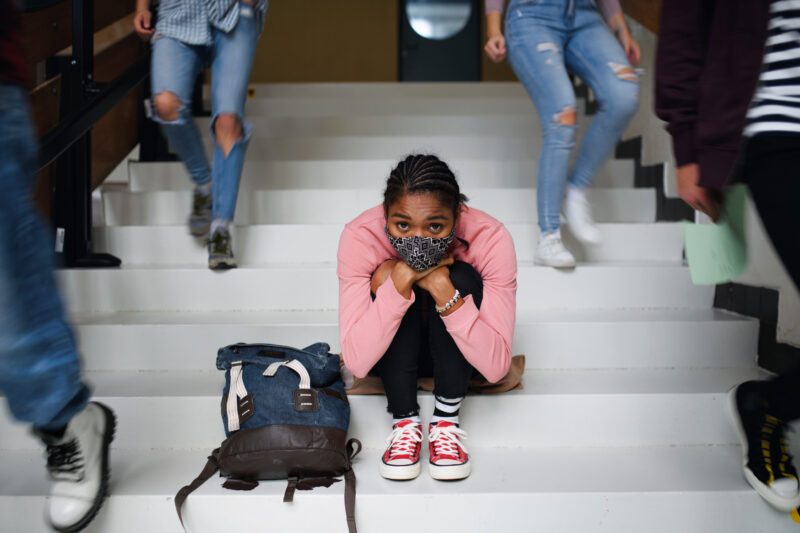Creating an environment of empathy: 6 classroom strategies you can implement today
On July 9, 2017, a group of five Florida teens, aged fourteen to nineteen, watched a man drown. They did not call for help. They did not try and assist him. In fact, the teens recorded the man’s final moments, taunted and mocked him as he struggled to stay afloat, and then posted the video of his death on YouTube. (CNN reported on the story.) And though this story speaks to many issues, one thing is certain. These teens lacked empathy.
While the story might stir up outrage in some, as it should, others like me will feel overcome with sadness. To die unnecessarily while being mocked is a tragedy. But so are the circumstances that allowed those teens to become so insensitive to the life and death needs of another person.
How can anyone be so unfeeling? What happened in these teens’ lives that they thought their actions were okay and even worthy of YouTube fame?
I don’t have an answer to that question, and perhaps no one does. But it does raise an important issue regarding young people today: empathy.
What is Empathy?
Empathy: the process of identifying with or feeling the emotions, thoughts, or attitudes of others.
Those teens lacked empathy. They did not identify with the fear and desperation that the man showed as he lived his last moments. And as a result, 31-year-old Jamel Dunn lost his life.
No doubt this case is extreme, but the lack of empathy in young people today is becoming a common problem. Lack of empathy leads to a slew of problems in the school environment: bullying, cruelty, prejudices, gang issues…the list could go on forever.
A Greater Need for Empathy
Empathy is essential. Dr. Steve Taylor in an article for “Psychology Today” calls empathy “one of the most important and beneficial human qualities.” Empathy is something teachers, parents, and school leaders should be actively encouraging and developing in the next generation. But how?
As important as empathy is to humanity in general and our schools in particular, it is not hard to develop. In fact, the human brain is wired for empathy with what researchers call “mirror neurons.”
With a few simple strategies, teachers can create a classroom environment that takes advantage of students’ readiness for empathy. Doing so will impact not only the students within the walls of their classrooms but their entire school culture.
6 Classroom Strategies for Developing Empathy in Students
Make time for reflection:
One of the first steps in having empathy for someone else is to understand our own feelings. Giving students class time to think about their personal experiences and emotions can give them the self-awareness that leads to empathy.
You might consider implementing reflection journals. Have each student write in their reflection journal one or two times a week about a topic related to empathy. Encourage students to think about their own emotions and actions and how those actions impact others and bring about emotions in them.
You can make your prompts simple such as “What is something nice you can do for someone else this week?” Or make them more complex like “What would you do if you knew a classmate didn’t have any food at home?”
Helping students raise awareness of their own emotions will later help them connect with others over those same emotions. It is the rare student who will do this kind of reflection on their own. Therefore teachers who provide time for it in class will give their students a highly beneficial gift.
Learn outside the classroom:
When most people think of learning, they picture classrooms and textbooks, but today’s teachers know that effective learning goes beyond classroom walls. From field trips to flipped classrooms, the world is full of learning opportunities for students of all ages.
Teachers who want to promote SEL in general and empathy, in particular, will find that getting outside textbooks and classrooms, either physically or virtually, will give students a greater picture of the world and the people around them.
Broadening student perspective, giving them a view outside their own life, will open students to the idea that what they see is not all the world has to offer. And when they see the good things they can learn and experience in the world at large, they will be more open to people and experiences that are different from themselves – a key aspect of developing empathy.
Invite guest speakers, go on virtual tours, Skype with professionals in the field... These and other ways of going beyond book learning will help students understand that the world is a vast place and they can make connections there as they pursue their education,
Go global:
Once students see that learning extends beyond their immediate environment, it’s time to introduce them to the people beyond their walls.
Empathy is all about seeing the similarities between ourselves and others around us, especially those who are different. It’s easy to empathize with our best friend, not so much with someone who looks, sounds, and acts differently from us.
So giving students opportunities to see similarities with individuals and cultures outside their own is a great way to encourage empathy, and you don’t have to travel to the other side of the world to do it.
Look a little closer to home for the people who don’t fit the mold – immigrant communities, ESL students, foreign exchange students, even pen pals around the globe. Encourage students to get to know these people and find things they have in common. Help them see the world from the perspective of these individuals.
Discussing current events is also a great way to bring the globe into the classroom, particularly if you ask students to think about how they would handle the same situations.
Teachers can find lots of great resources for connecting around the globe. Check out the Global Oneness Project and the Kid Link Project to get started.
Create a safe space:
In order to see the similarities we have with others, we must first learn more about them. And for students to do that, the classroom must be a safe place for self-expression.
Teens are particularly sensitive to the reactions and opinions of others, and unless teachers are intentional about making their classrooms a safe place to be who you are and express who you are, students will be reticent to go beyond, “Hi how are you?... I am fine,” with their peers.
There are multiple ways to make your classroom a safe place. One of the first and easiest is to set aside a time for students to share with one another.
Consider having regularly occurring open class meetings. These meetings can be a safe time and place for students to share with one another.
Teach students active listening skills and good communication skills, such as those covered in BASE’s course “Communicating with Peers.” When students can share their thoughts and opinions effectively and know that others will listen, teachers will see a safe place emerge.
The most effective class meetings will have set expectations. For example: use "I statements" rather than "you statements," don’t share your emotions in a way that hurts others, don’t give advice, don’t judge each other, don’t interrupt the speaker, ask follow-up questions, etc.
Encourage students to share their stories with their classmates. When it’s age appropriate, have conversations about race, gender, religion, sexual orientation, and other characteristics that make up each individual, creating an “identity safety” classroom.
Be a model:
The biggest factor in creating a safe classroom space is for teachers (and other adults) to be authentic models of empathy. We must listen actively and not judge. We must take student concerns seriously and not just brush things off as kids being kids. Teens need us to get to know them as individuals, learn about their lives, and think about more than their test scores.
Administrators can help teachers in this regard by providing continuing education and training on Social Emotional Learning. Emphasize how important it is for teens personally as well as schools in a wider scope.
And as teachers model empathy for their students, the most effective will also explain their thoughts behind their actions. When students can see why teachers are acting the way that they are, when they see the thought process behind the behaviors, they will more easily develop those same behaviors in themselves. At the same time, they will know why they should do what they are doing.
Serve others:
Young people and adults alike benefit from looking beyond themselves and their circumstances. Whether it is a simple act of kindness or a more in-depth service project for a needy slice of your community, help your students understand it isn’t the serving of other people but the understanding them that makes the greatest impact.
If your school requires community service hours, talk to students about their experiences and encourage them to share about the population they are serving.
If students aren’t required to do service hours on their own, consider volunteering as a class at a soup kitchen, a nursing home, a homeless shelter, services like the Foster Love Project, or any other need in your community. When possible, have students talk to the individuals they are serving, learn about their lives, and consider how they would feel if they were in those same circumstances.
Empathy Makes a Difference
New York Times columnist and author Charles M. Blow said this about empathy, “One doesn’t have to operate with great malice to do great harm. The absence of empathy and understanding are sufficient.”
If we want the best for our schools, if we want the best for the lives of our students, we must actively cultivate an environment of empathy. We cannot allow simple ignorance to promote hate and harm in our students’ relationships with each other and with the world.
Empathy is an essential SEL skill that teachers today would do well to cultivate and administrators would do well to require. In so doing, we will play our part in creating a generation focused more on how we can all come together than in what keeps us apart.



